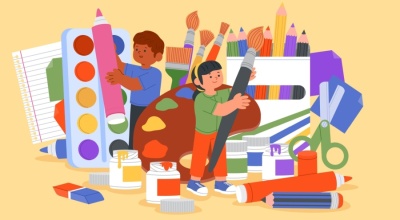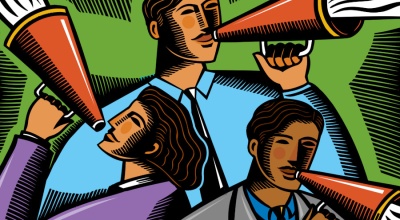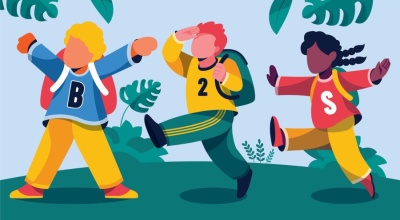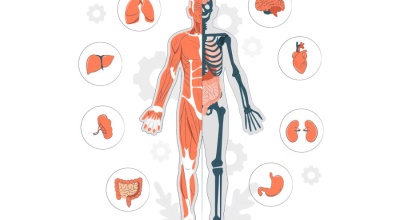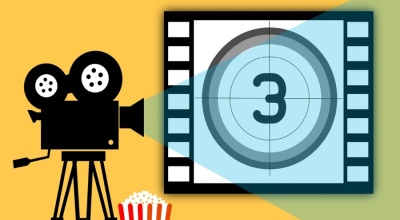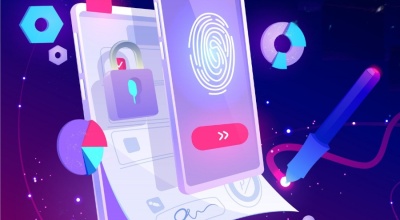Learn financial preparedness, gather financial and critical personal, household, and medical information before a disaster. Natural disasters can happen anywhere, but you can protect yourself and your finances by planning. A disaster can delay mail for days or weeks, start using electronic direct deposits.
Steps to Financial Preparedness
A weekend of preparation now can save you months of frustration and lots of money.
- You never know when a disaster will happen. You can prepare by setting aside money in a rainy-day fund. Learn more financial preparedness tips: #FinancialFuture2019
- Saving is the best financial defense against disasters. A little bit at a time can go a long way. USA.gov/flec #FinancialFuture2019
- Do you have all the documents and digital copies you need to protect yourself after a disaster? Use the checklists in the Emergency Financial First Aid Kit (EFFAK) and see if you are missing anything: #FinancialFuture2019
Insurance
What Should I Know About Flood Insurance? Protecting yourself today means knowing what to do when a flood is approaching your home or business.
- Before disaster strikes, review your #insurance coverage. Insurance is the fastest way to recover after a disaster.
- Where it rains it can #flood. One inch of water in your home can cost $25,000 in damage. Do you have flood insurance? ;
- Homeowners and renters insurance do not typically cover flood damage. Contact National Flood Insurance Program Help Center at 800-427-4661. Talk to your agent for your existing policy and ask about flood insurance. #FinancialFuture2019
- Documenting your private property can help #insurance claims if a disaster. Take this free action now and protect yourself later. #FinancialFuture2019
Financial Preparedness Associated Content, Information, and Resources
ConsumerFinance.gov has the information you need to plan and help safeguard your financial future in a disaster. Whether you are at risk of hurricanes, tornadoes, blizzards, wildfires, or earthquakes, here are three steps you can take right now to protect yourself financially and weather any storm.
The first step you can take is to download FEMA’s Emergency Financial First Aid Kit and fill it out. Once you complete the kit you will have everything you need in one place.
The next step is to find a safe space to store the kit and the documents you gathered. Lastly, make sure you understand your insurance options, and the extent of your coverage in case of a disaster. Renter's, homeowner's, and auto insurance policies generally don’t cover all aspects of a disaster. You may also need to investigate specialized coverage like earthquake insurance and flood insurance.
Americans at all income levels have experienced the challenges of rebuilding their lives after a disaster or other emergency. In these stressful circumstances, having access to personal financial, insurance, medical, and other records is crucial for starting the process of recovery quickly and efficiently. Taking the time now to collect and secure these critical records will give you peace of mind and, in the event of an emergency, will ensure that you have the documentation needed to start the recovery process without delay.
- Gather financial and critical personal, household, and medical information.
- Consider saving money in an emergency savings account that could be used in any crisis. Keep a small amount of cash at home in a safe place. It is important to have small bills on hand because ATM’s and credit cards may not work during a disaster when you need to purchase necessary supplies, fuel or food.
- Obtain property (homeowners or renters), health, and life insurance if you do not have them. Review existing policies for the amount and extent of coverage to ensure that what you have in place is what is needed for you and your family for all possible hazards. Homeowners insurance does not typically cover flooding, so you may need to purchase flood insurance from the National Flood Insurance Program.
At Home
Using FEMA’s Emergency Financial First Aid Kit (EFFAK) as a guide, or by downloading a secure mobile app on your phone, store important documents either in a safety deposit box, an external drive, on the cloud to make it easy to access during a disaster.
Contact State Vital Records Office
Having your financial and medical records and important contact information will be crucial to help you start the recovery process quickly. Take time now to safeguard these critical documents.
Household Identification
- Photo ID to prove identity of household members
- Birth certificate to keep or re-establish contact with family members
- Social security card to apply for FEMA disaster assistance
- Military service
- Pet ID tags
Financial and Legal Documentation
- Housing Payments to find financial records and obligations
- Insurance policies to re-establish financial accounts
- Sources of income to keep payments and credit
- Tax statements to provide contact information for financial and legal providers & apply for FEMA disaster assistance
Medical Information
- Physician information to provide doctors with health information if medical care
- Copies of health insurance information to ensure existing care continues uninterrupted
- Immunization records
- Medications
Insurance Information
Having insurance for your home or business property is the best way to ensure you will have the necessary financial resources to help you repair, rebuild, or replace whatever is damaged. Document and insure your property now.
Household Contact information
- Banking Institutions
- Insurance agent
- Health professionals
- Service providers
- Place of worship
Get your benefits electronically
A disaster can disrupt mail service for days or weeks. If you depend on Social Security or other regular benefits, switching to electronic payments is a simple, significant way to protect yourself financially before disaster strikes. It also eliminates the risk of stolen checks. The U.S. Department of the Treasury recommends two safer ways to get federal benefits:
- Direct deposit to a checking or savings account. Federal benefit recipients can sign up by calling (800) 333-1795 or sign up online
- The Direct Express® prepaid debit card is designed as a safe and easy alternative to paper
Tornado | Rain and Floods | Earthquakes | Lightning | Volcanoes | Winter Storm
EPAP for Patients - phe.gov
The Emergency Prescription Assistance Program, or EPAP, helps people in a federally-identified disaster area who do not have health insurance get the prescription drugs, vaccinations, medical supplies, and equipment that they need. This program helps people and communities better cope with a disaster and reduces stress on the healthcare system.
People who are eligible for EPAP can file a claim at more than 72,000 retail pharmacies across the United States and its territories for prescription items that were lost, stolen, or destroyed because of a disaster.
If you have questions about using EPAP during a disaster, call the EPAP Hotline at 1-855-793-7470.
Extra Measures for People with Special Needs
- Write down your specific needs, limitations, capabilities, and medications. Keep this list near you always–perhaps in your purse or wallet.
- Find someone nearby (a spouse, roommate, friend, neighbor, relative, or co-worker) who will agree to assist you in case of an emergency. Give him or her a copy of your list. You may also want to provide a spare key to your home, or directions to find a key.
- Keep aware of weather conditions through whatever means are accessible to you. Some options are closed captioning or scrolled warnings on TV, radio bulletins, or call-in weather information lines.
Disaster Safety Plans
Download Emergency Preparedness Checklist
A disaster supplies kit is a collection of basic items your household may need in the event of an emergency.
Make sure your emergency kit is stocked with the items on the checklist below. Most of the items are inexpensive and easy to find, and any one of them could save your life. Headed to the store? Download a printable version to take with you. Once you take a look at the basic items, consider what unique needs your family might have, such as supplies for pets, or seniors.
Checklist on Emergency Preparedness
Additional Emergency Supplies
Consider adding the following items to your emergency supply kit based on your individual needs:
- Prescription medications
- Non-prescription medications such as pain relievers, anti-diarrhea medication, antacids or laxatives
- Glasses and contact lenses solution
- Infant formula, bottles, diapers, wipes, diaper rash cream
- Pet food and extra water for your pet
- Cash or traveler's checks
- Important family documents such as copies of insurance policies, identification and bank account records saved electronically or in a waterproof, portable container
- Sleeping bag or warm blanket for each person
- Complete change of clothing appropriate for your climate and sturdy shoes
- Household chlorine bleach and medicine dropper to disinfect water
- Fire extinguisher
- Matches in a waterproof container
- Feminine supplies and personal hygiene items
- Mess kits, paper cups, plates, paper towels and plastic utensils
- Paper and pencil
- Books, games, puzzles or other activities for children
Maintaining Your Kit
After assembling your kit remember to maintain it so it’s ready when needed:
- Keep canned food in a cool, dry place
- Store boxed food in tightly closed plastic or metal containers
- Replace expired items as needed
- Re-think your needs every year and update your kit as your family’s needs change.
Kit Storage Locations
Since you do not know where you will be when an emergency occurs, prepare supplies for home, work and vehicles.
- Home: Keep this kit in a designated place and have it ready in case you have to leave your home quickly. Make sure all family members know where the kit is kept.
- Work: Be prepared to shelter at work for at least 24 hours. Your work kit should include food, water and other necessities like medicines, as well as comfortable walking shoes, stored in a “grab and go” case.
- Vehicle: In case you are stranded, keep a kit of emergency supplies in your car.
Public Downloads
All items are free to view, share, and download.
Public Downloads - Español (Spanish)
When available, we provide all our content with a Spanish version in our public download section. You can find additional material from sources listed in all our articles.
Download Personal Forms
Download Organ Donation Content
Download People with Special Needs Preparedness Planning Steps, Activities and Videos
Download Severe Weather Educational Fact Sheets, Videos, Coloring and Activity Books
Download Ready Wrigley Activity Books
Educational materials in 23 different languages, including American Sign Language (ASL).
Download Emergency Preparedness Activities
Download Emergency Preparedness Activity Books
Download Emergency Preparedness Coloring Pages
Download Emergency Preparedness Puzzles
Download Emergency Learning Activities
Playlist: Danger Rangers
Seven animal heroes called the "Danger Rangers," their robot Fallbot, and their artificial intelligence called SAVO teach children about safety through examples, such as environmental hazards and unsafe places.












Danger Rangers Fire Safety App
http://www.amazon.com/gp/product/B00FQT22RO
Download our latest Fire Safety App for Apple iOS and Amazon Kindle! Full of games, stories, music videos and full length Danger Ranger episodes.


